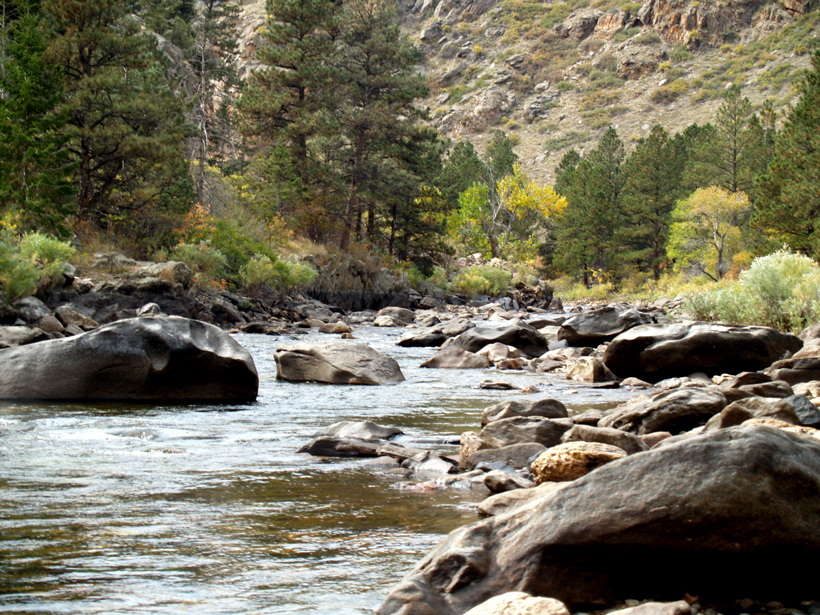A look at the interconnected nature of hydrologic, ecologic, and socioeconomic systems shows that they are all vulnerable to anticipated changes in Earth’s climate. To anticipate how and when natural systems—water resources in particular—will respond to future climate scenarios, scientists need a robust understanding of two-way interactions between the land surface and the atmosphere on a large scale and between ecosystems and resource availability on a small scale. Models of these natural systems can inform management and regulatory tactics that optimize trade-offs between ecosystem resilience and human economic activity.
Modeling and managing hydrologic systems invoke one common theme: water’s essential nature for life and productivity.
To predict and manage the fate of water resources on this planet, we need collaboration between researchers, engineers, and governments. Although seemingly disparate in methodology, modeling and managing hydrologic systems invoke one common theme: water’s essential nature for life and productivity.
Hydrology Days 2015 at Colorado State University (CSU) gathered a multidisciplinary group of researchers, engineers, and government officials to identify problems and share solutions related to hydrology in a changing climate. Focus areas included the water cycle and its interactions with land surface, atmospheric, ecosystem, and political processes and all aspects of water resources engineering, management, and policy. The meeting included opportunities for postgraduate and graduate attendees to make brief research and management presentations, as well as ample time for social interaction and collaboration.
Three keynote lectures embodied the interdisciplinary vision and goal of the meeting. Amilcare Porporato (Duke University), the conference’s Borland Lecturer in hydrology, discussed ecohydrology, specifically the two-way interaction of soil microbial ecosystems and catchment hydrology [see Manzoni et al., 2008]. Scott Tyler (University of Nevada at Reno), who received the conference’s Hydrology Days Award, examined how cutting-edge geophysical measurement technologies can help solve key scientific and engineering challenges in hydrology [Tyler et al., 2009; Kobs et al., 2014]. Gordon Grant (U.S. Forest Service), the conference’s Borland Lecturer in hydraulics, put forth a hypothesis of critical flow in mobile-bed streams [Grant, 1997]. These three lectures all highlighted future directions in water resources research and the need for students to lead the way.
Hydrology Days at CSU has been a tradition for more than 35 years, sponsored by the American Geophysical Union and supported by CSU’s integrative approach to water resources research. It originated as an opportunity to discuss water in the western United States and other water-stressed areas of the country, but it has grown to include research from around the world.
At each meeting, students and other attendees learn a broad range of tools to solve hydrologic uncertainties in an interdisciplinary fashion, and they learn the ways in which water affects physical and social sciences alike. Interested participants for 2016 and beyond should contact Jorge Ramirez in the Department of Civil and Environmental Engineering at Colorado State University.
References
Grant, G. E. (1997), Critical flow constrains flow hydraulics in mobile-bed streams: A new hypothesis, Water Resour. Res., 33(2), 349–358.
Kobs, S., D. M. Holland, V. Zagorodnov, A. Stern, and S. W. Tyler (2014), Novel monitoring of Antarctic ice shelf basal melting using a fiber-optic distributed temperature sensing mooring, Geophys. Res. Lett., 6779–6786, doi:10.1002/2014GL061155.
Manzoni, S., R. B. Jackson, J. A. Trofymow, and A. Porporato (2008), The global stoichiometry of litter nitrogen mineralization, Science, 321, 684–686.
Tyler, S. W., J. S. Selker, M. B. Hausner, C. E. Hatch, T. Torgersen, C. E. Thodal, and S. G. Schladow (2009), Environmental temperature sensing using Raman spectra DTS fiber-optic methods, Water Resour. Res., 45, W00D23, doi:10.1029/2008WR007052.
—Adam N. Wlostowski, Erika May Smull, and Jonathan Quebbeman, Department of Civil Engineering, Colorado State University, Fort Collins; email: [email protected]
Citation: Wlostowski, A. N., E. M. Smull, and J. Quebbeman (2016), Water resources in a changing climate, Eos, 97, doi:10.1029/2016EO043385. Published on 13 January 2016.
Text © 2016. The authors. CC BY-NC 3.0
Except where otherwise noted, images are subject to copyright. Any reuse without express permission from the copyright owner is prohibited.

